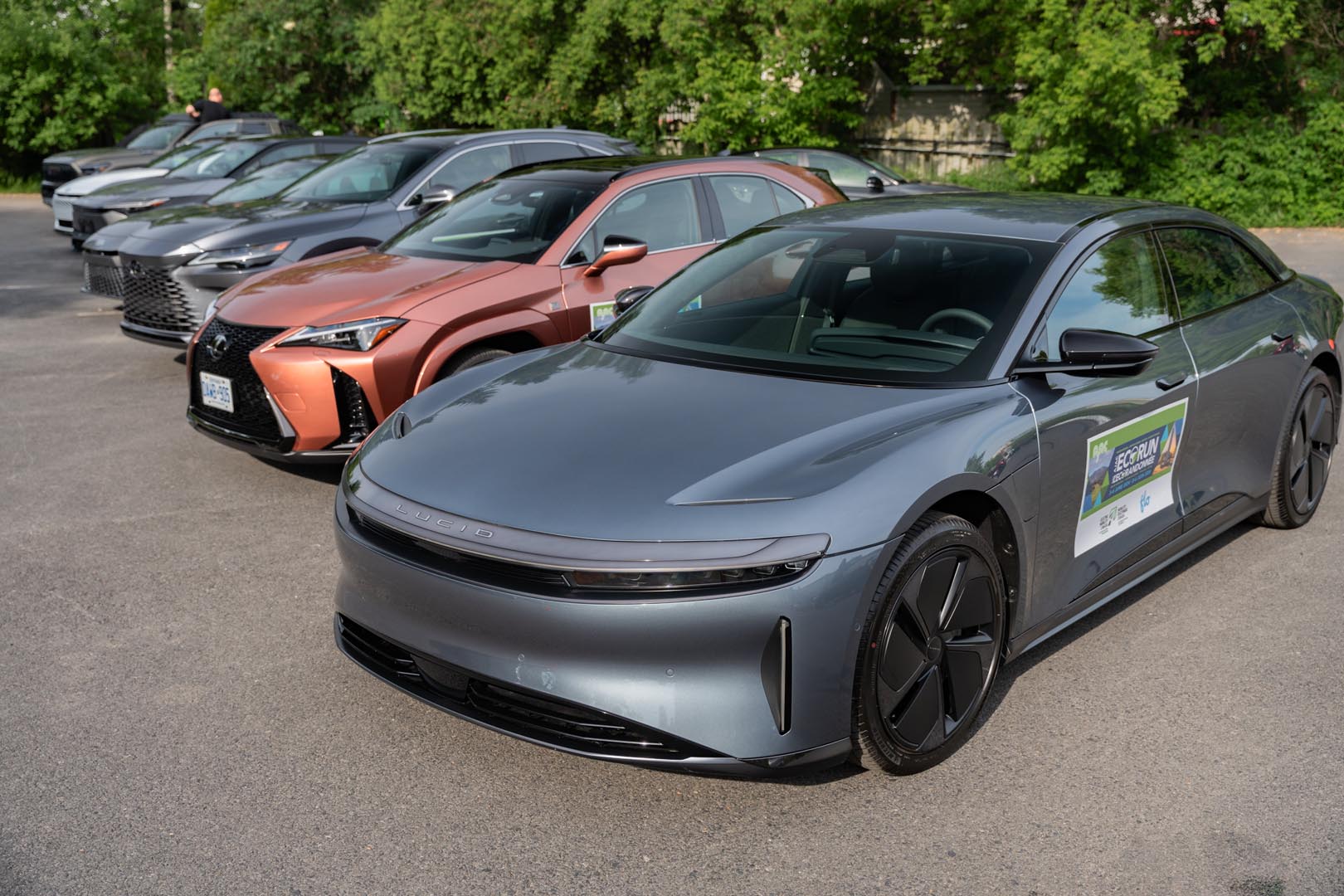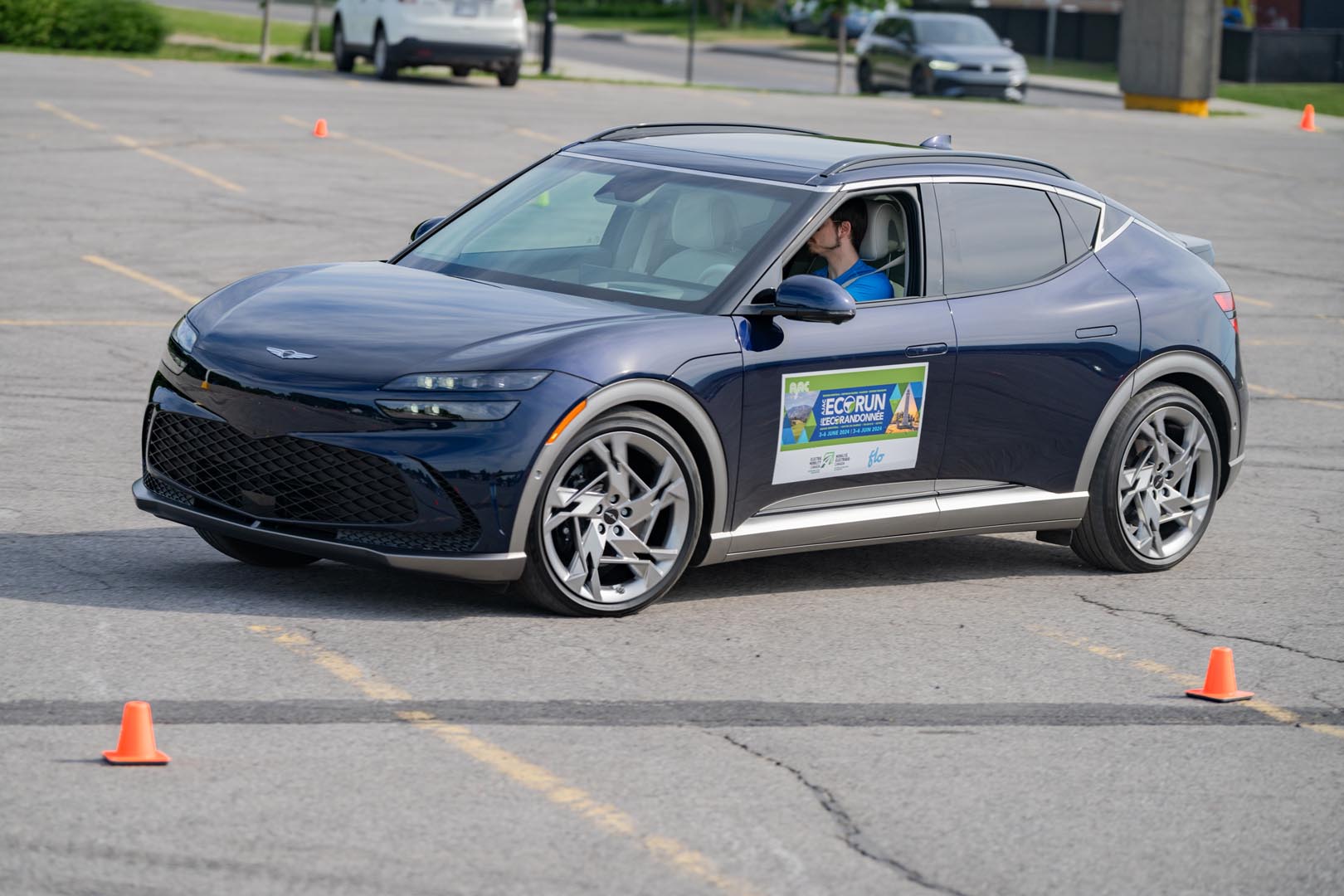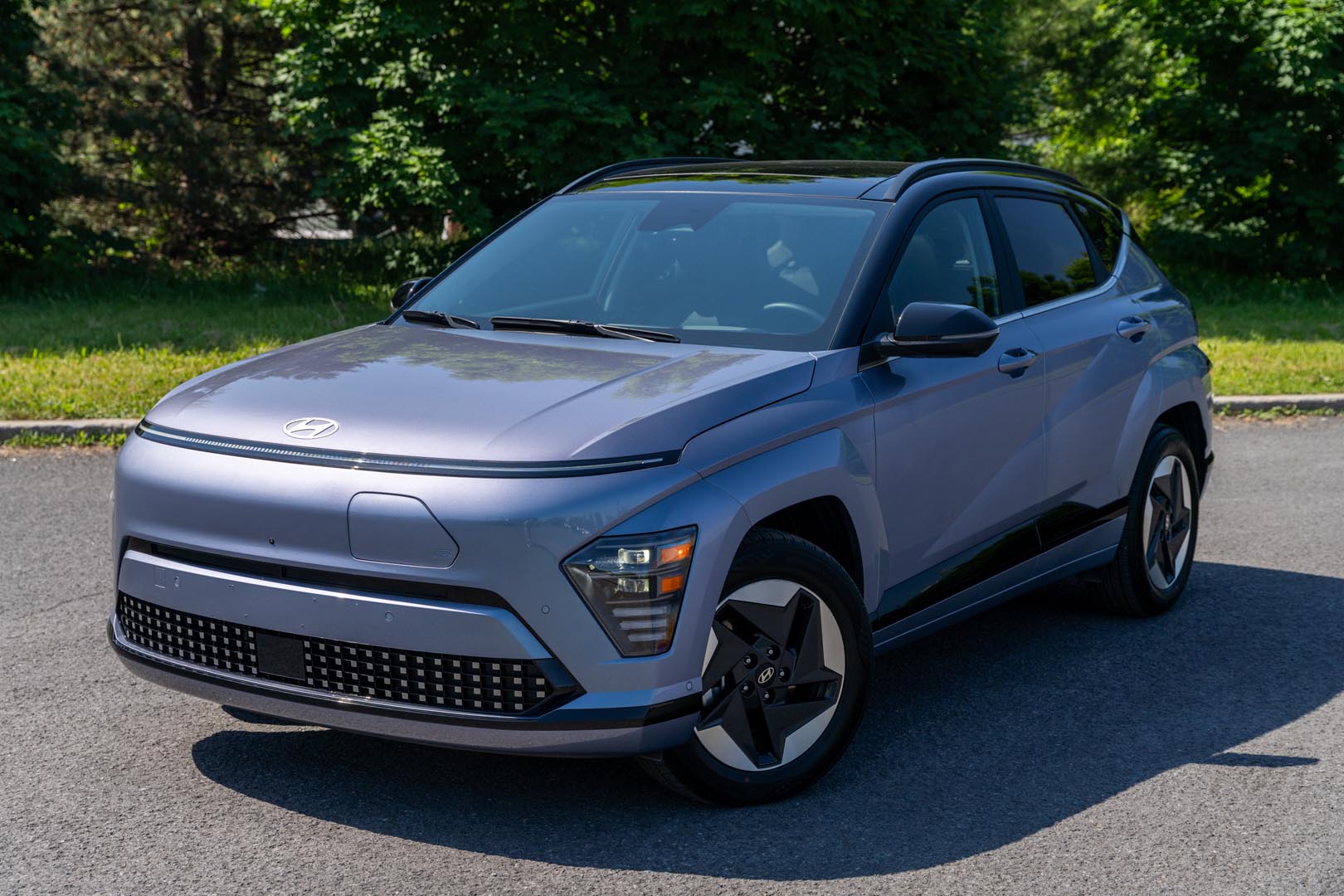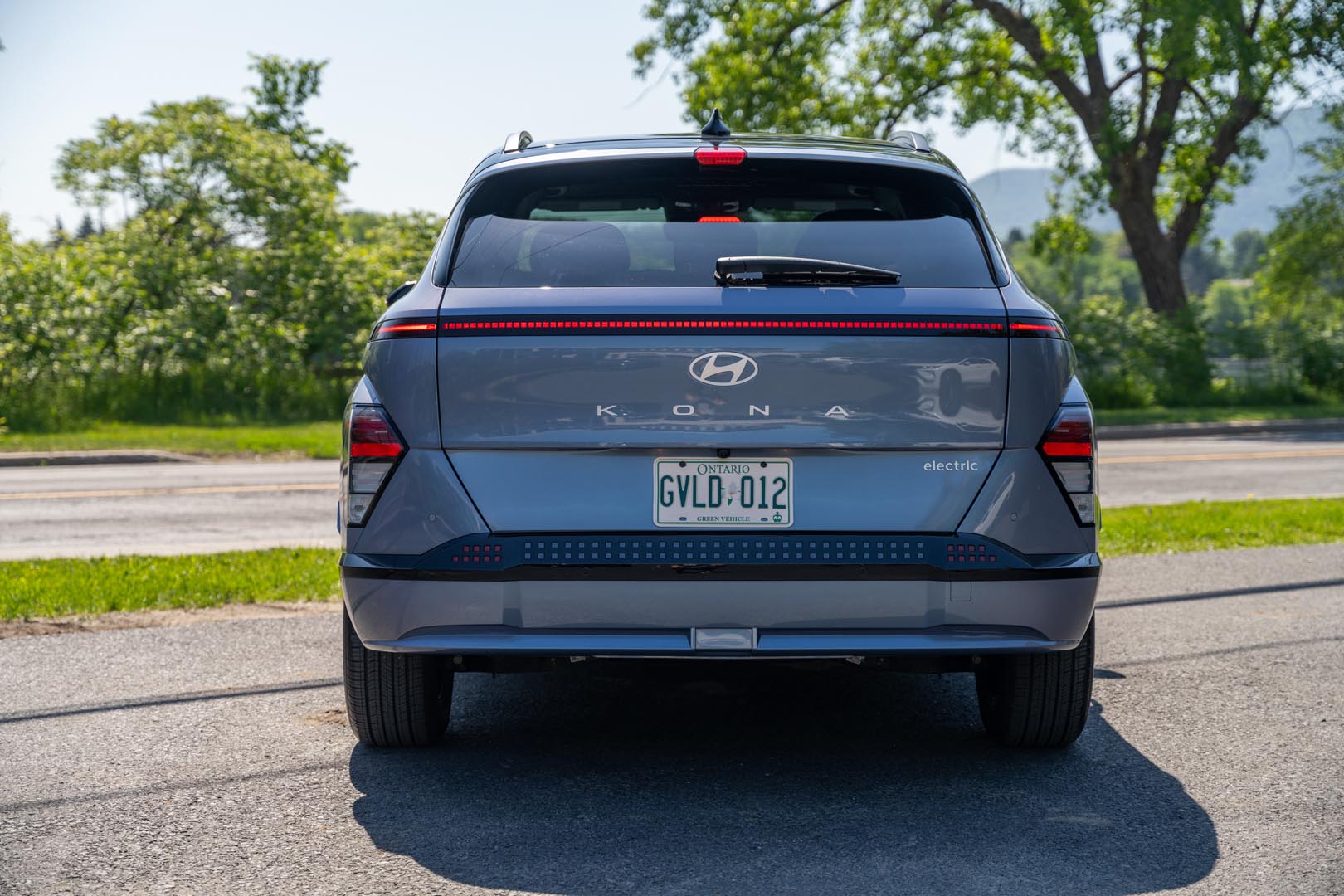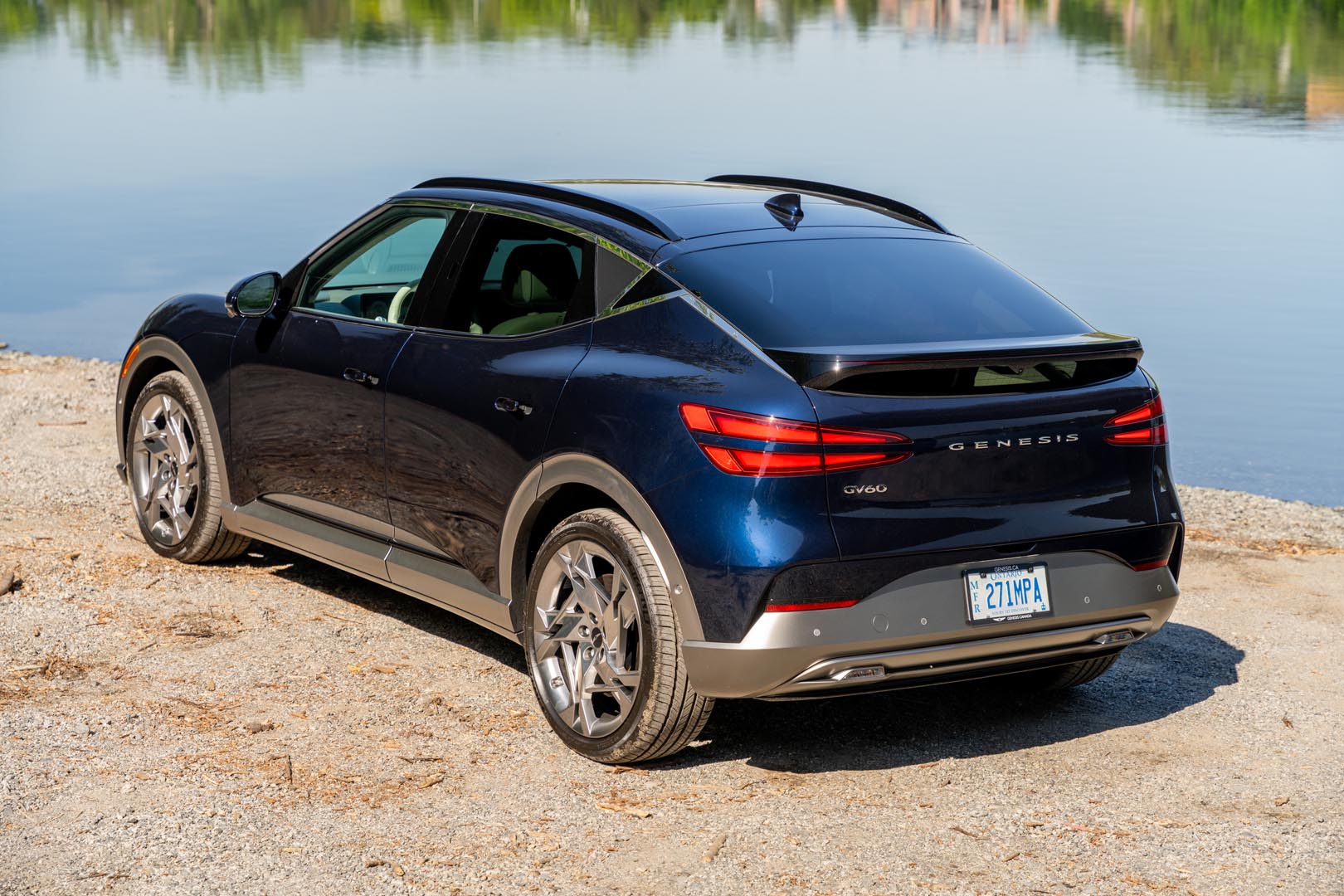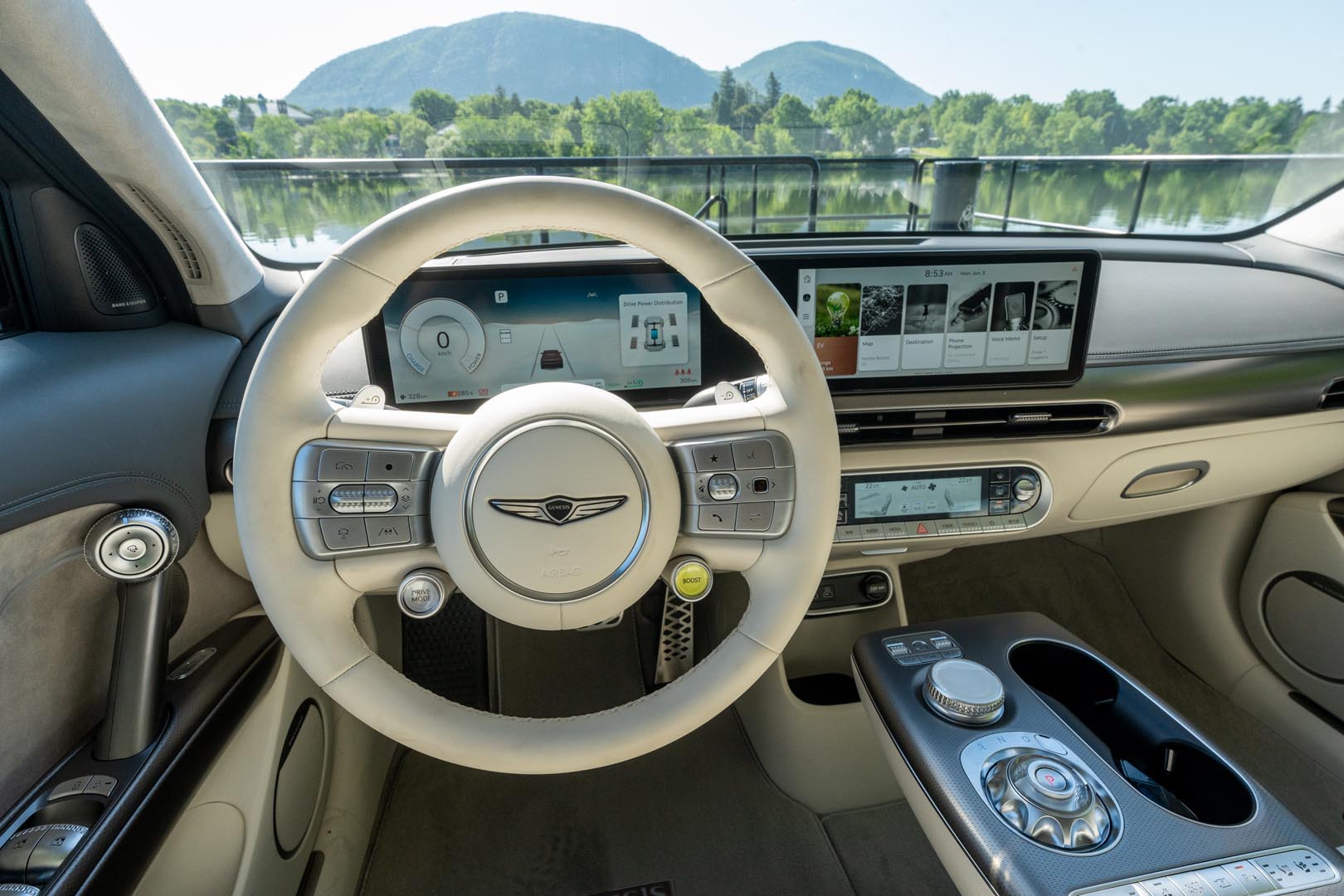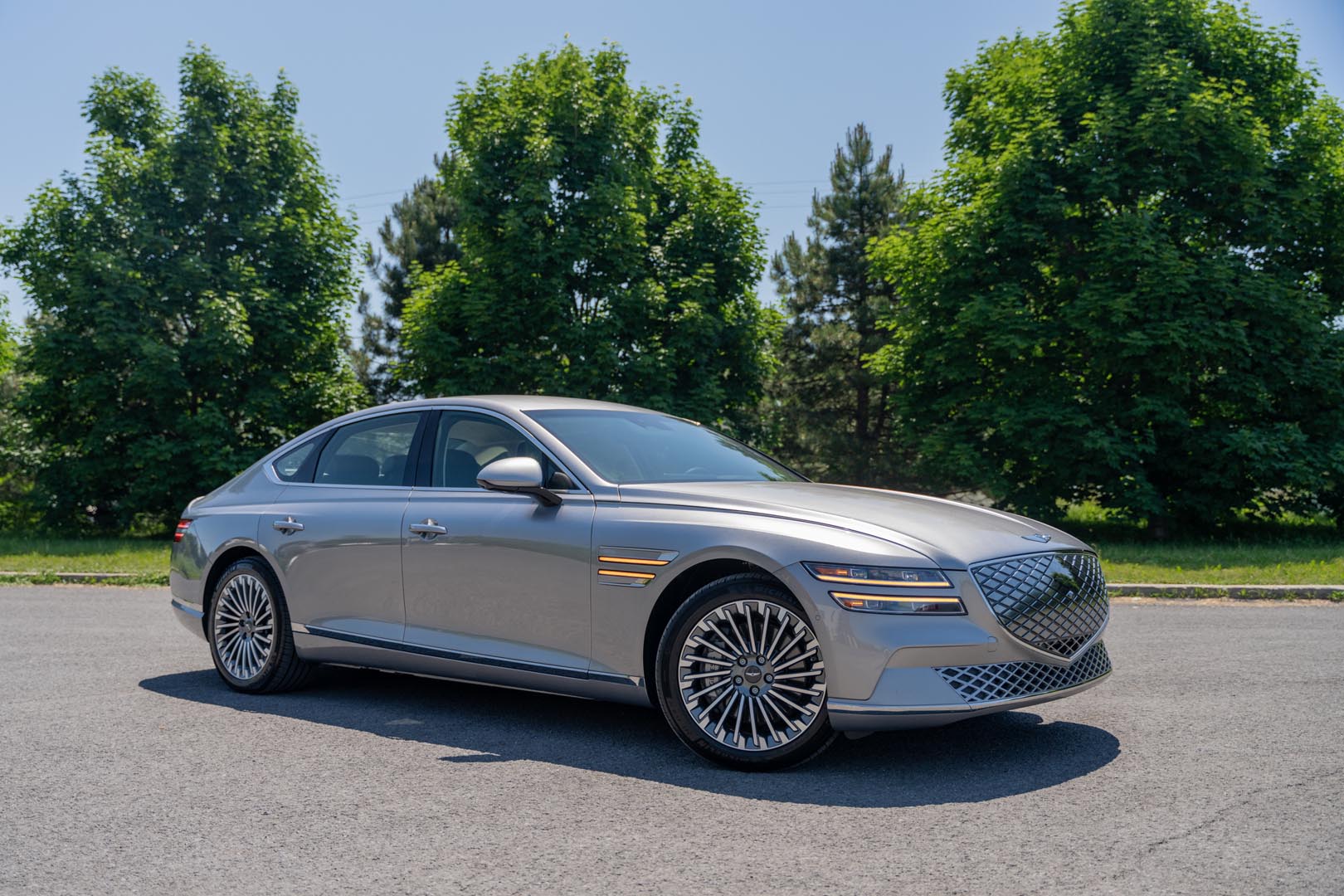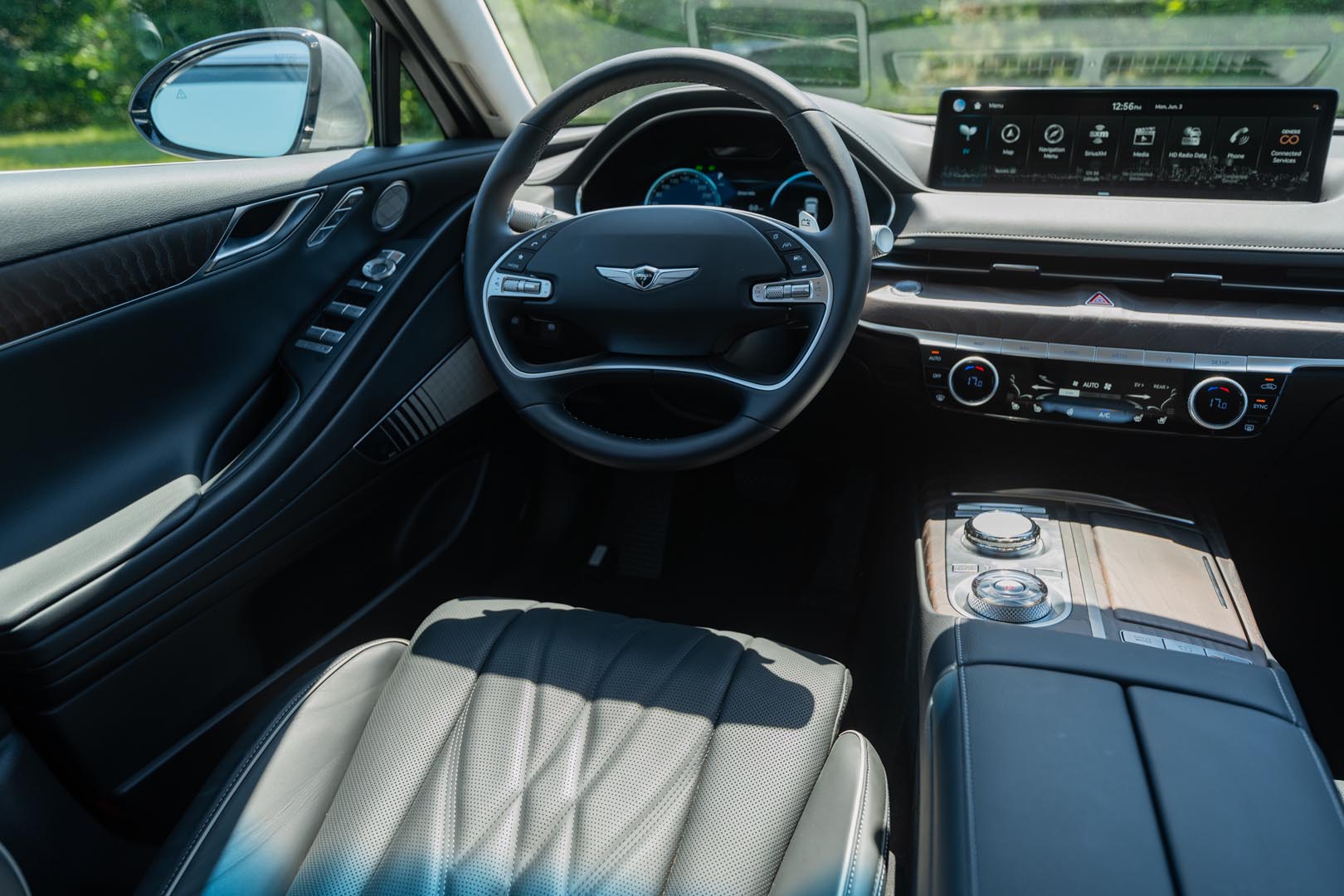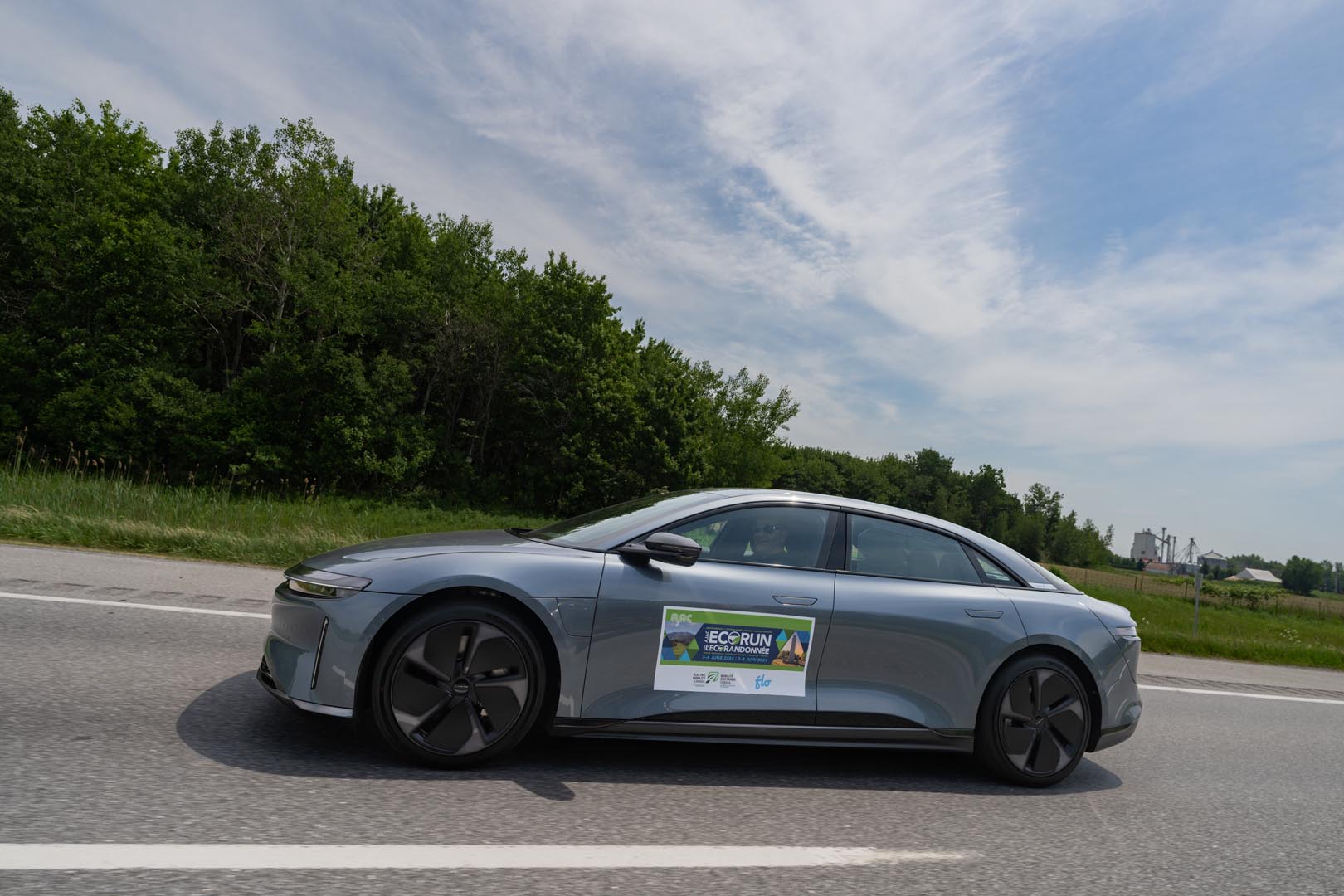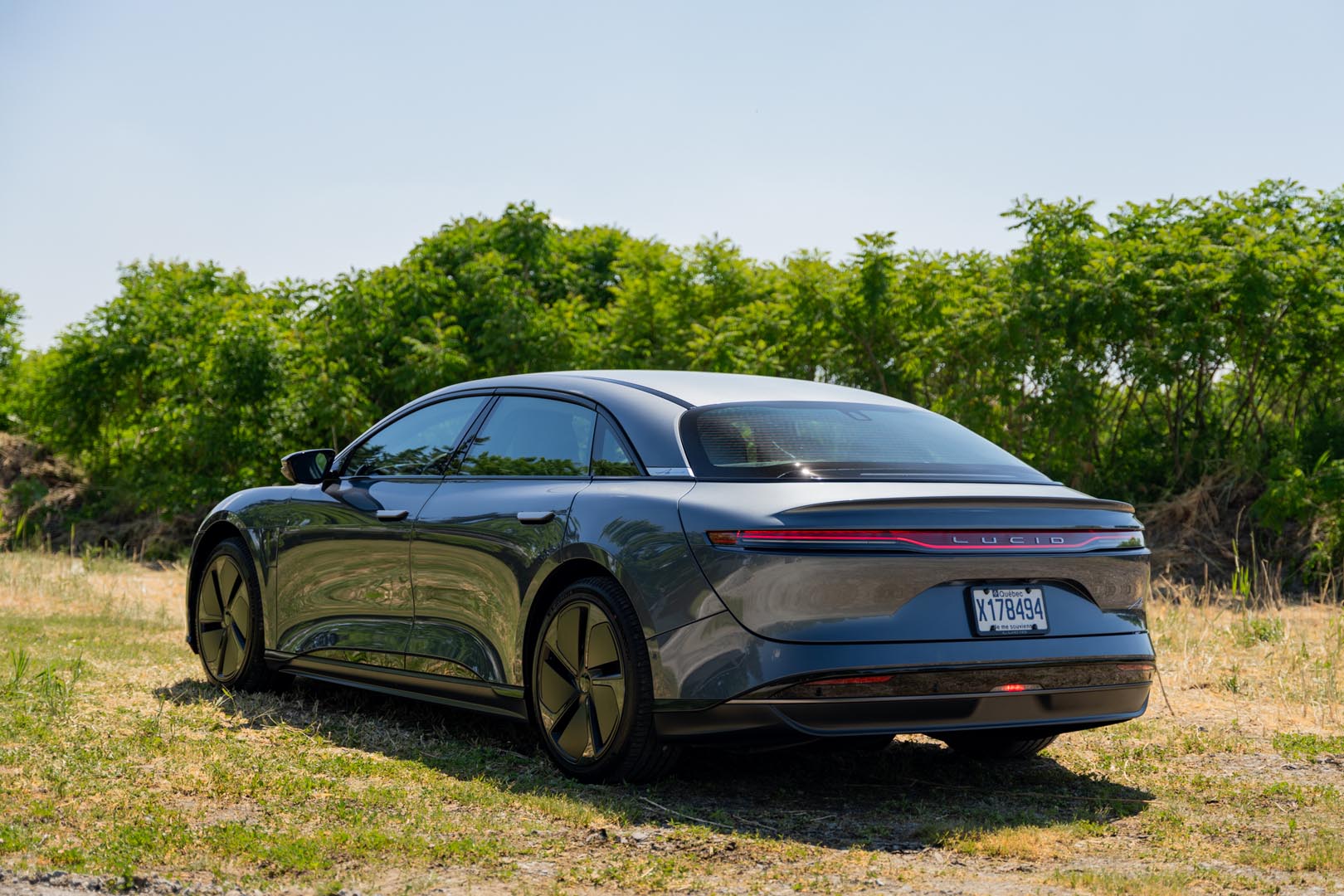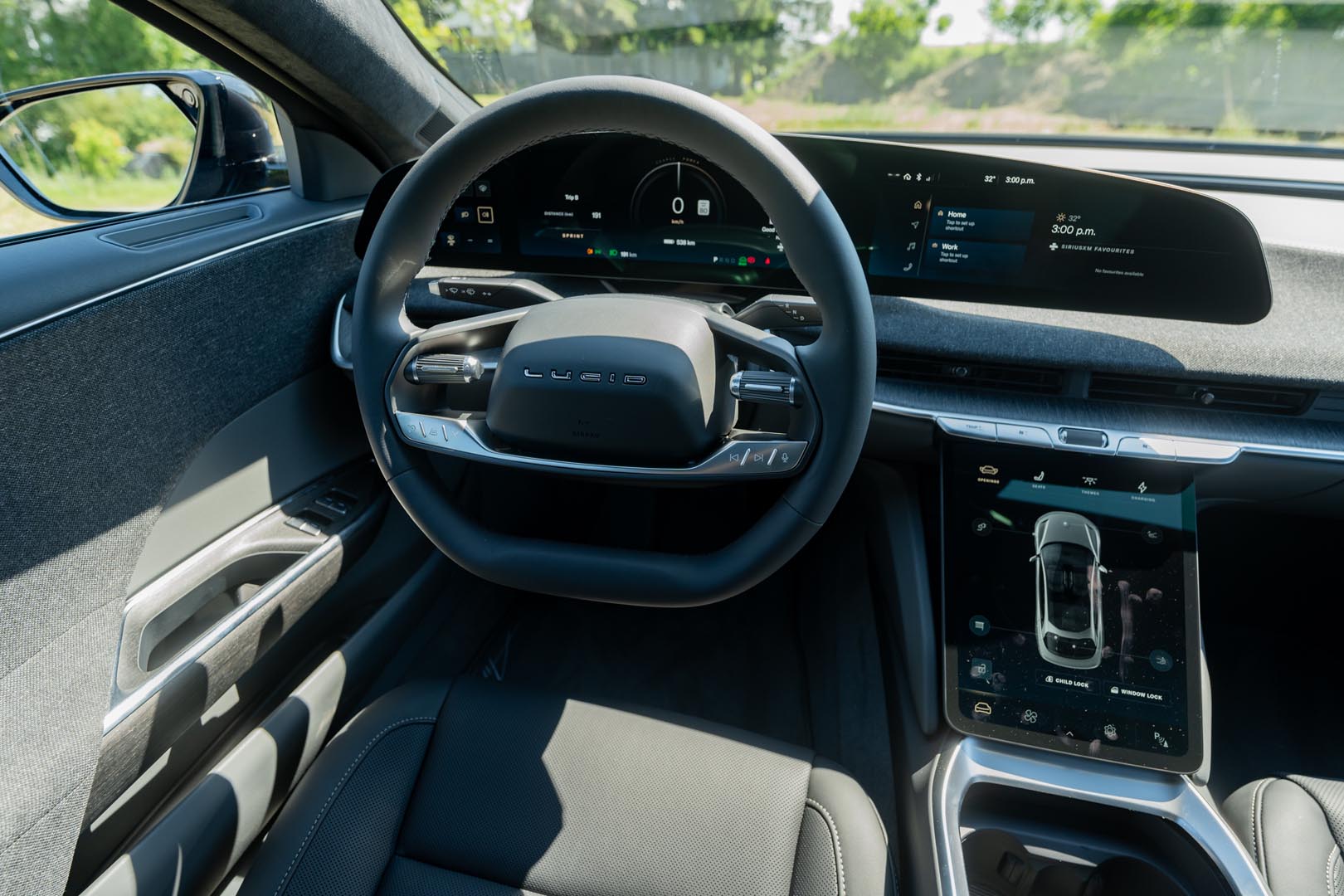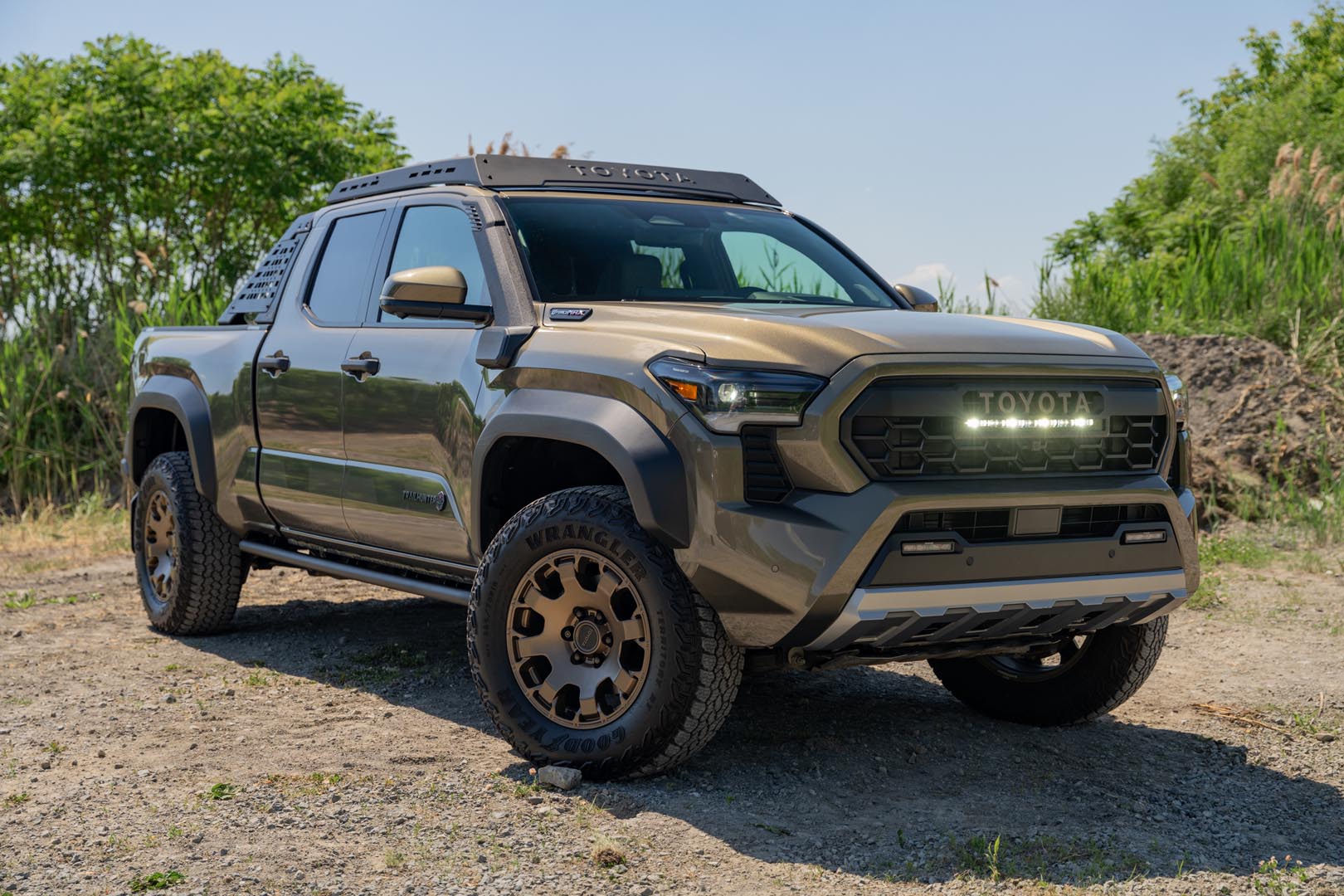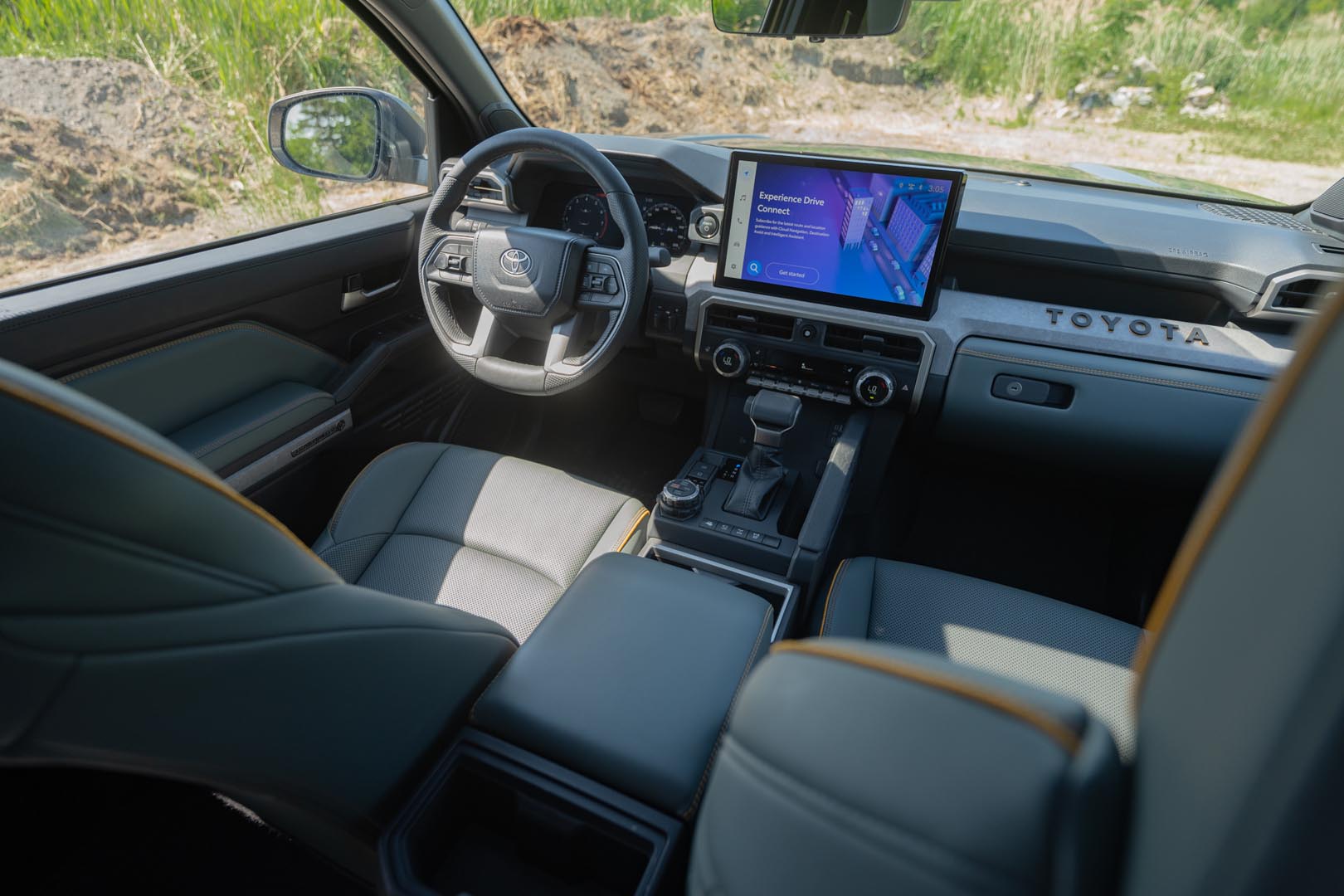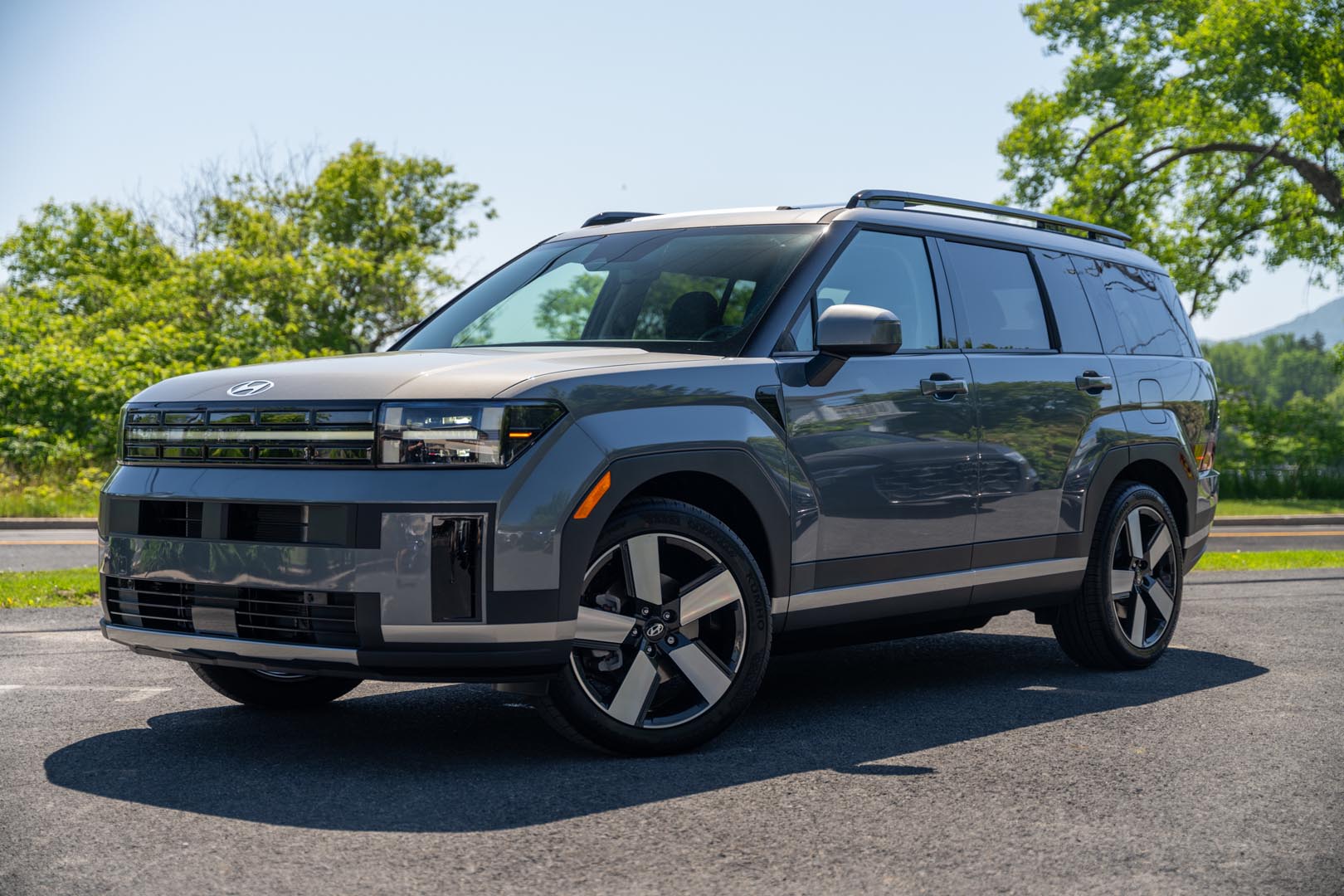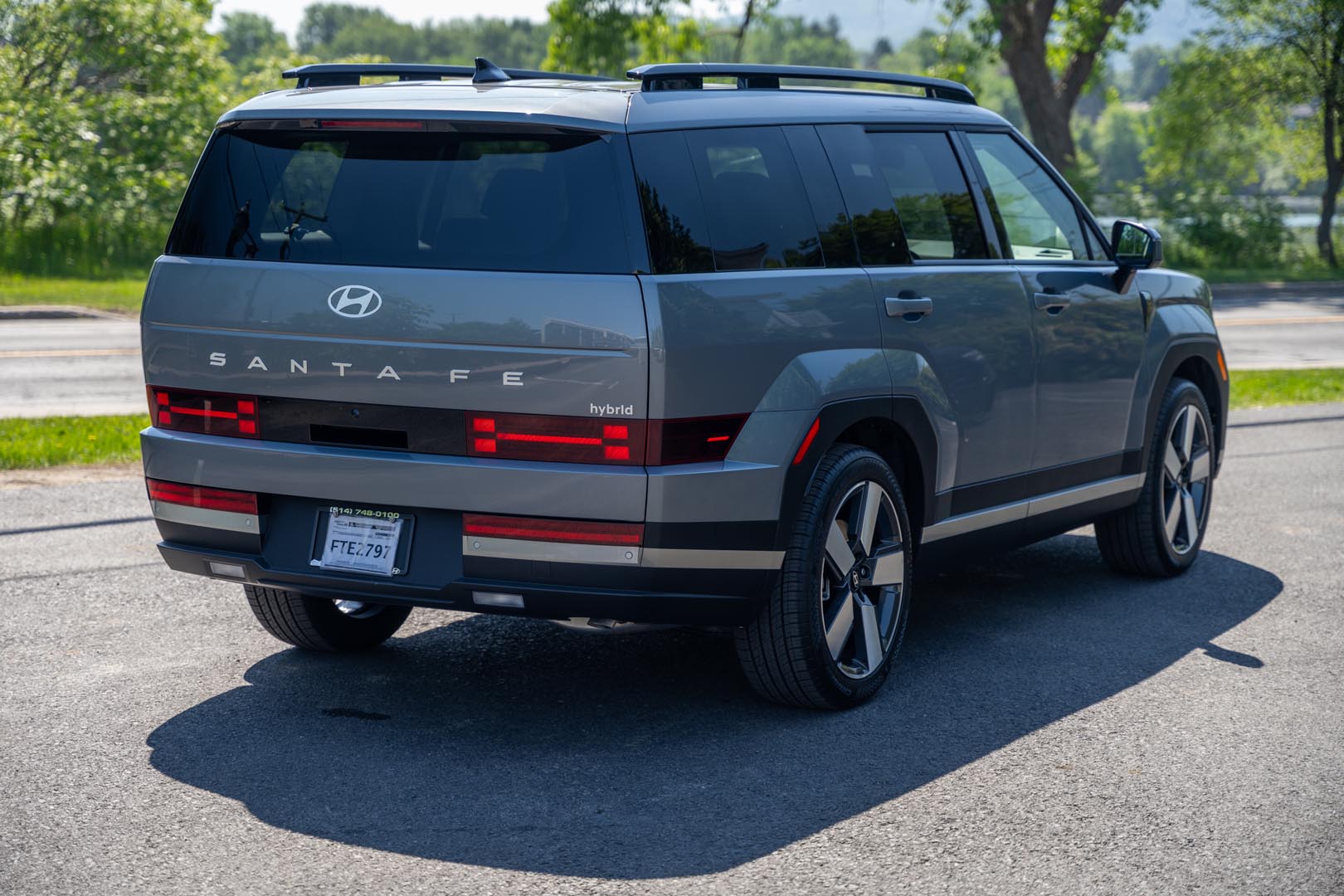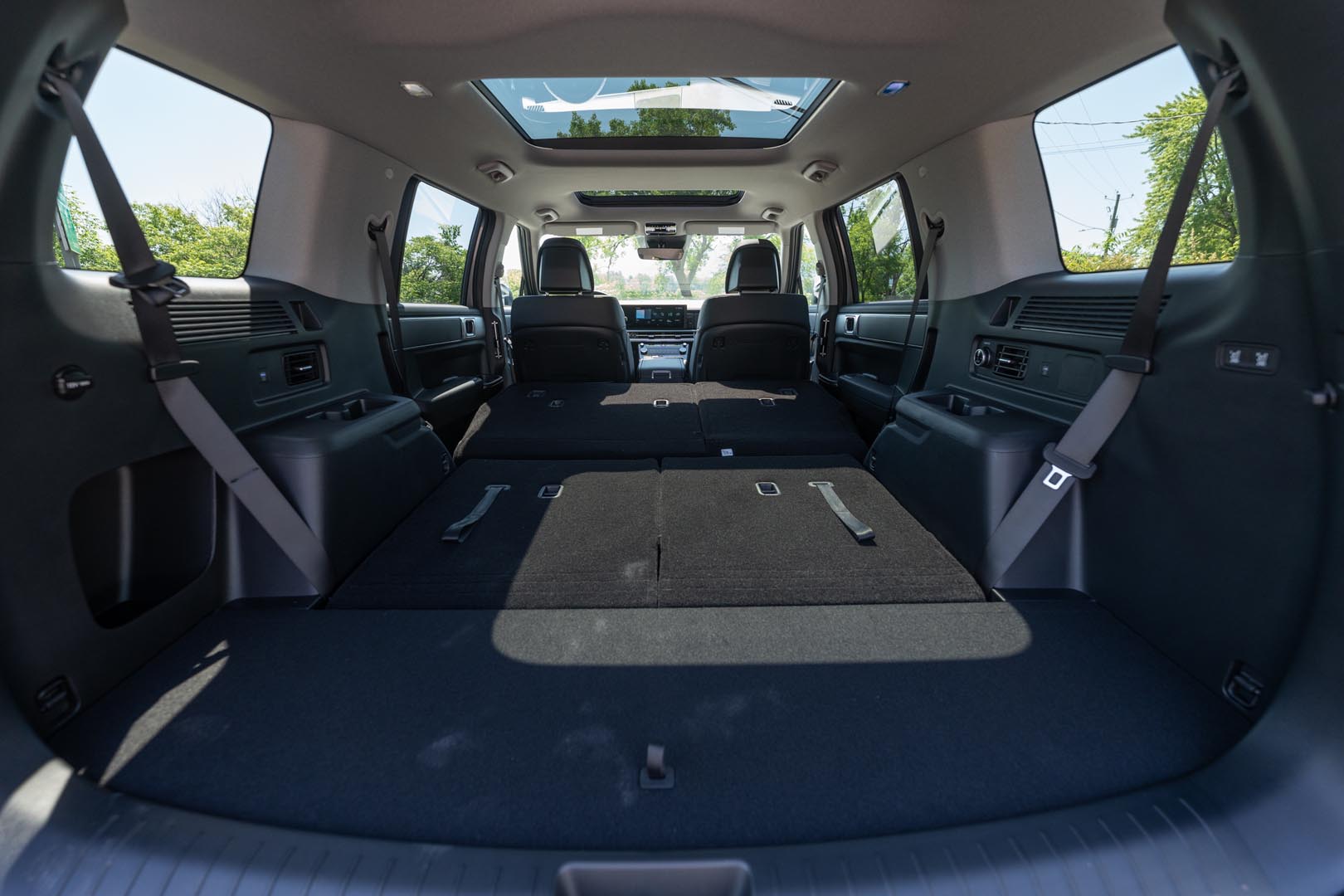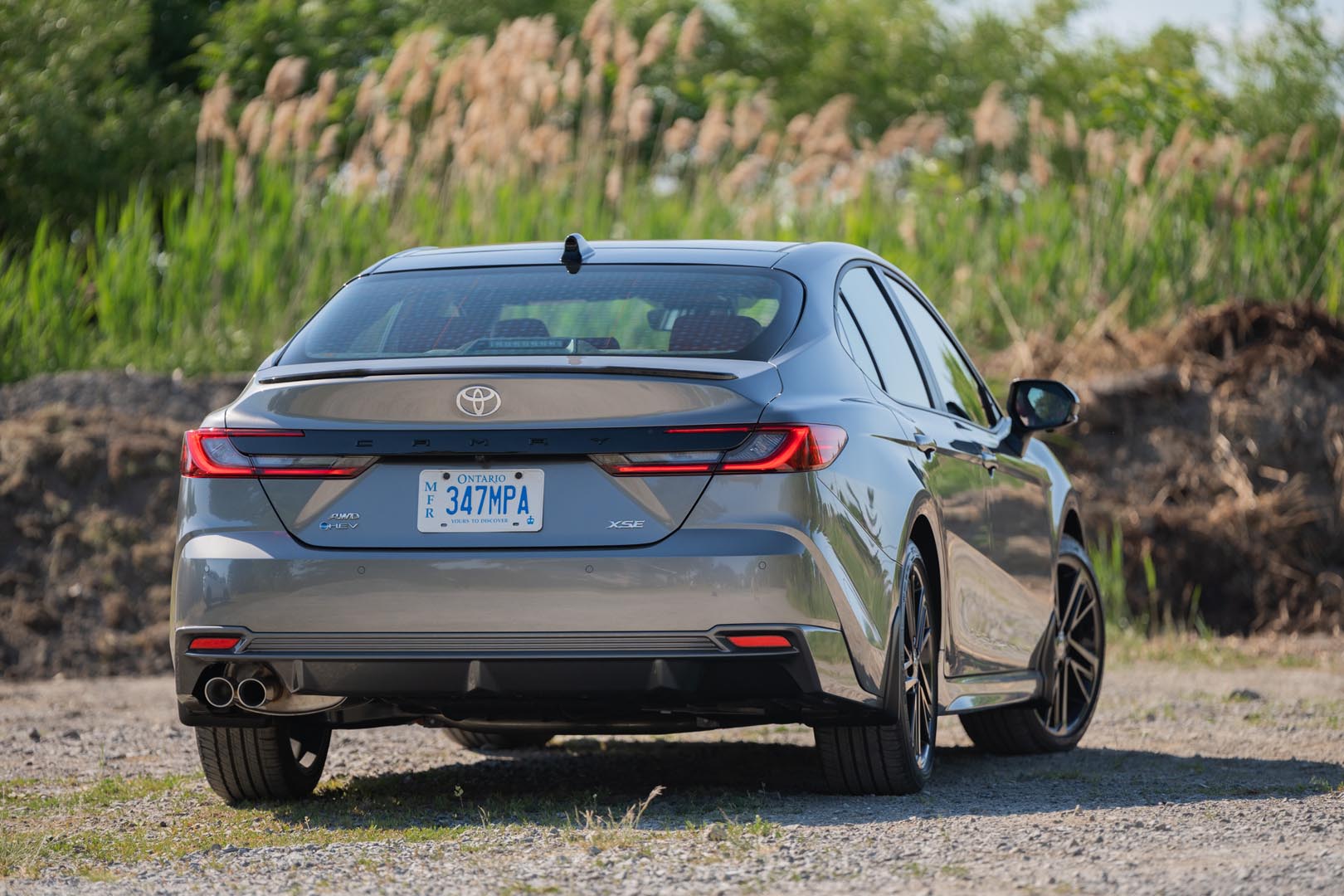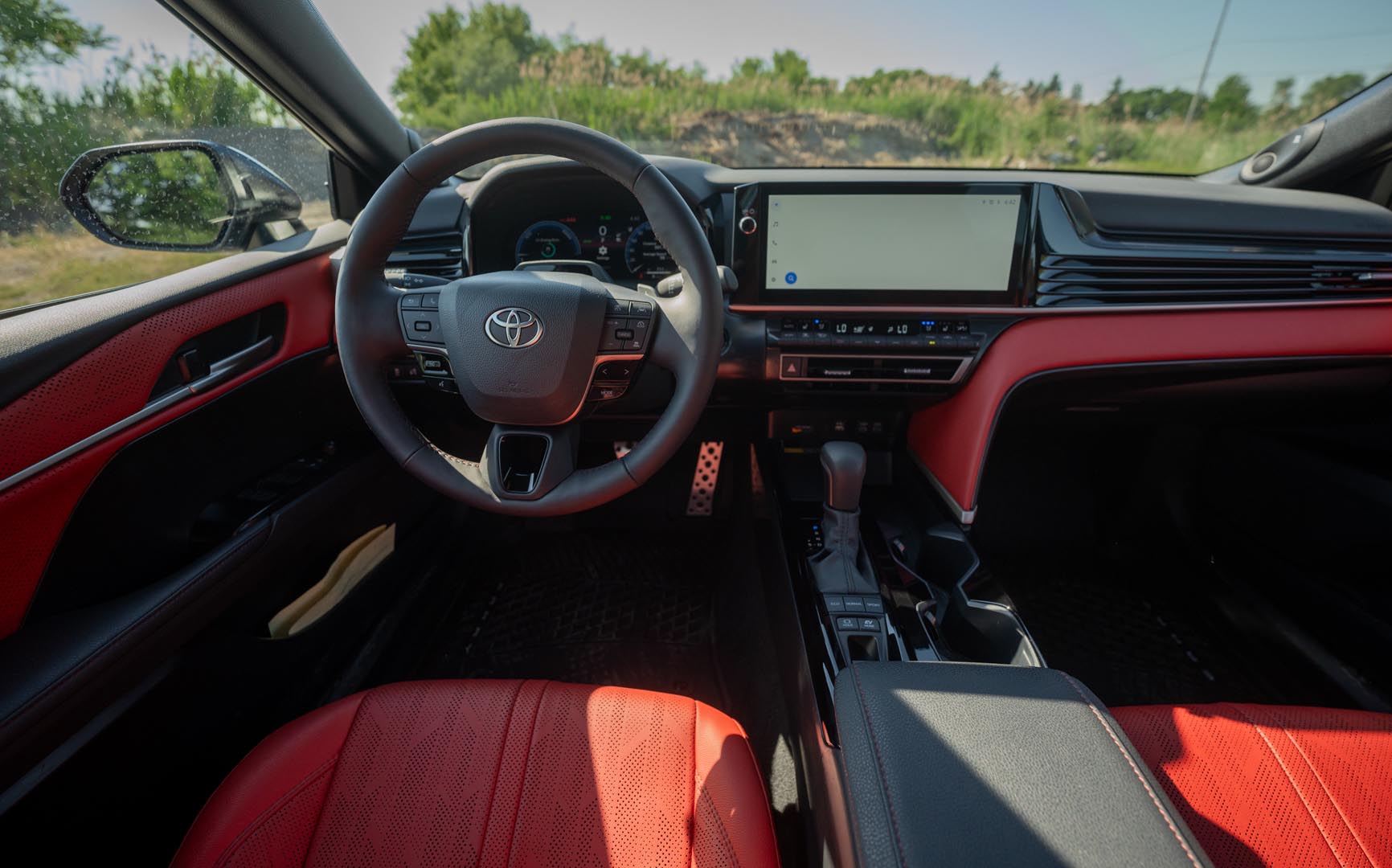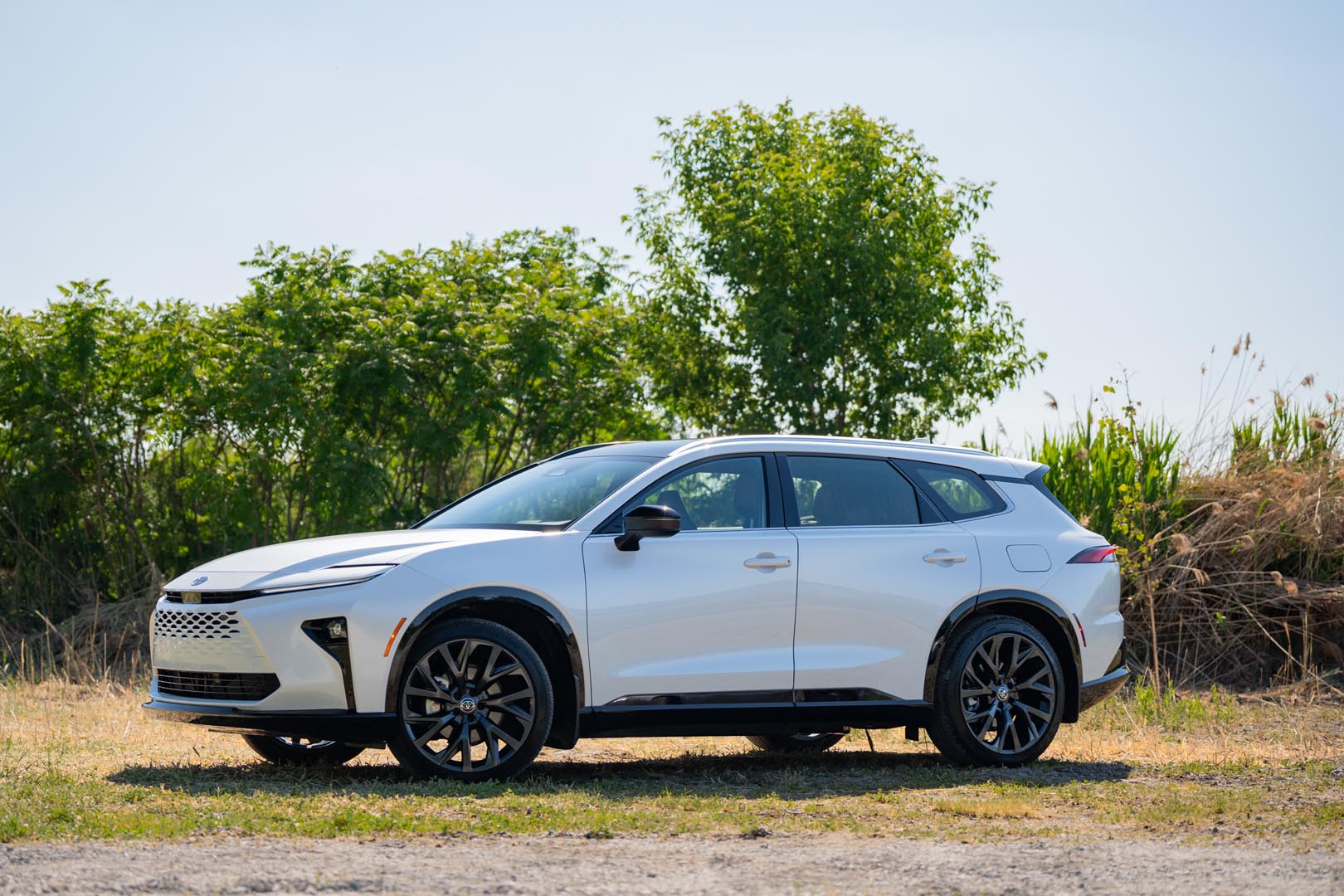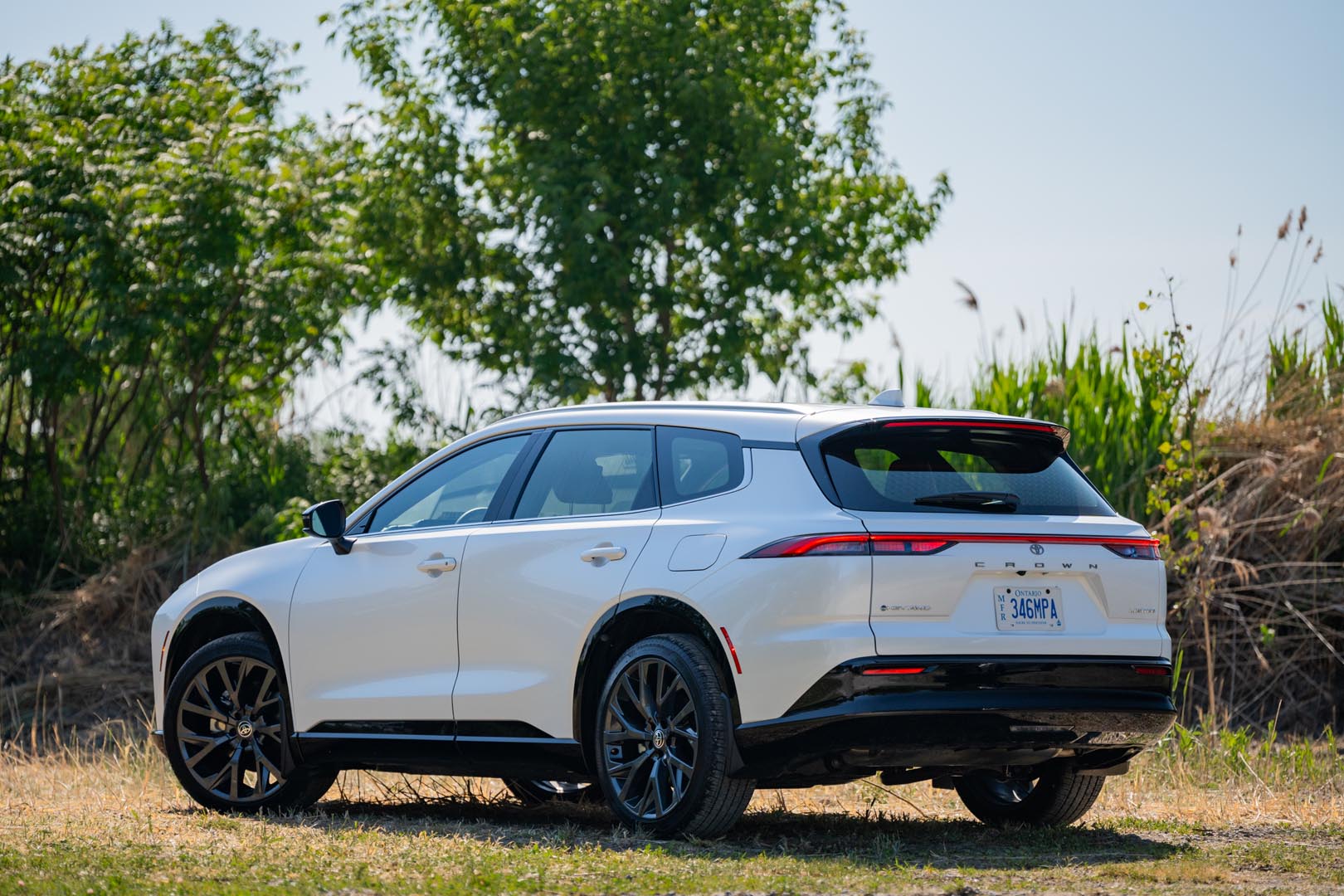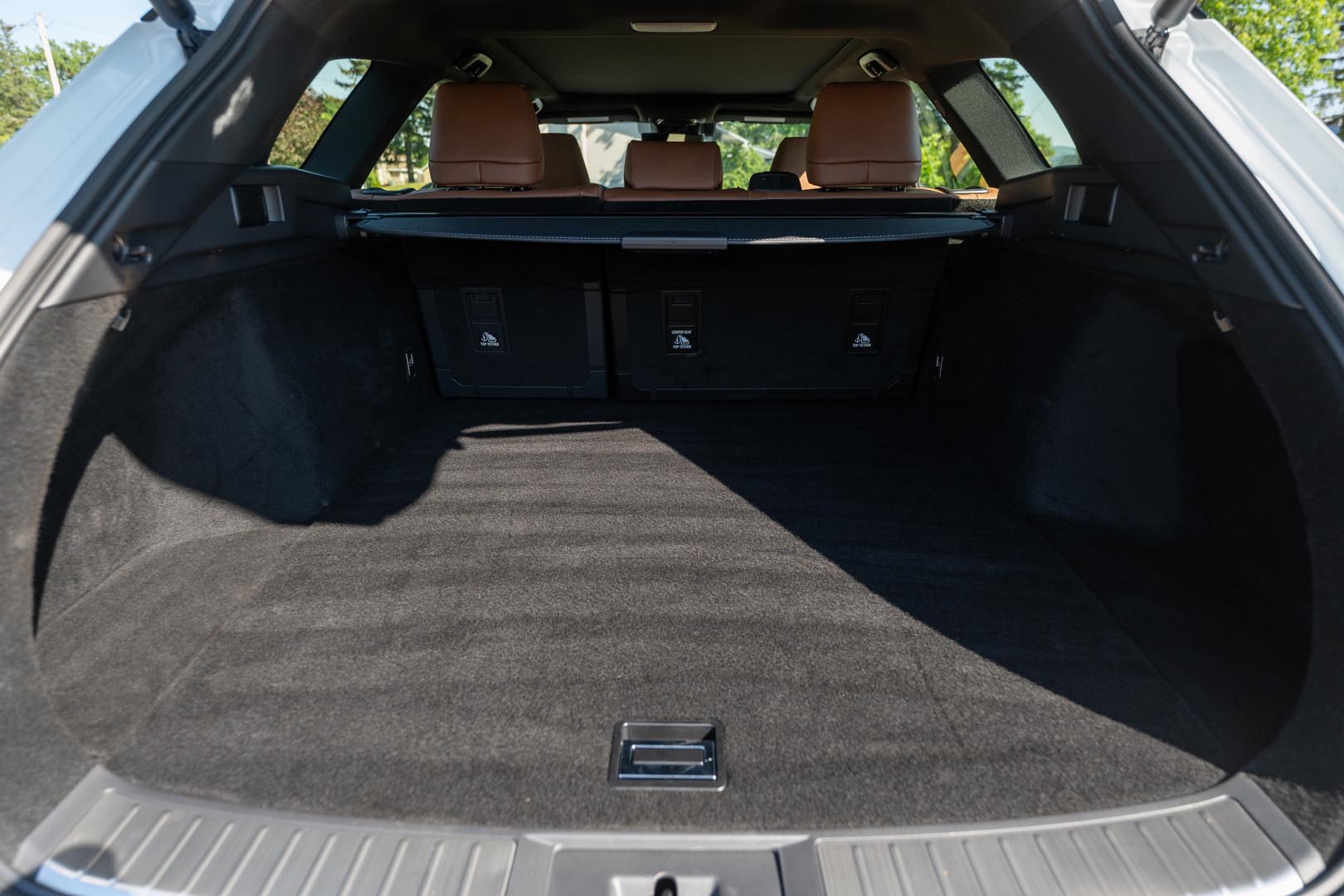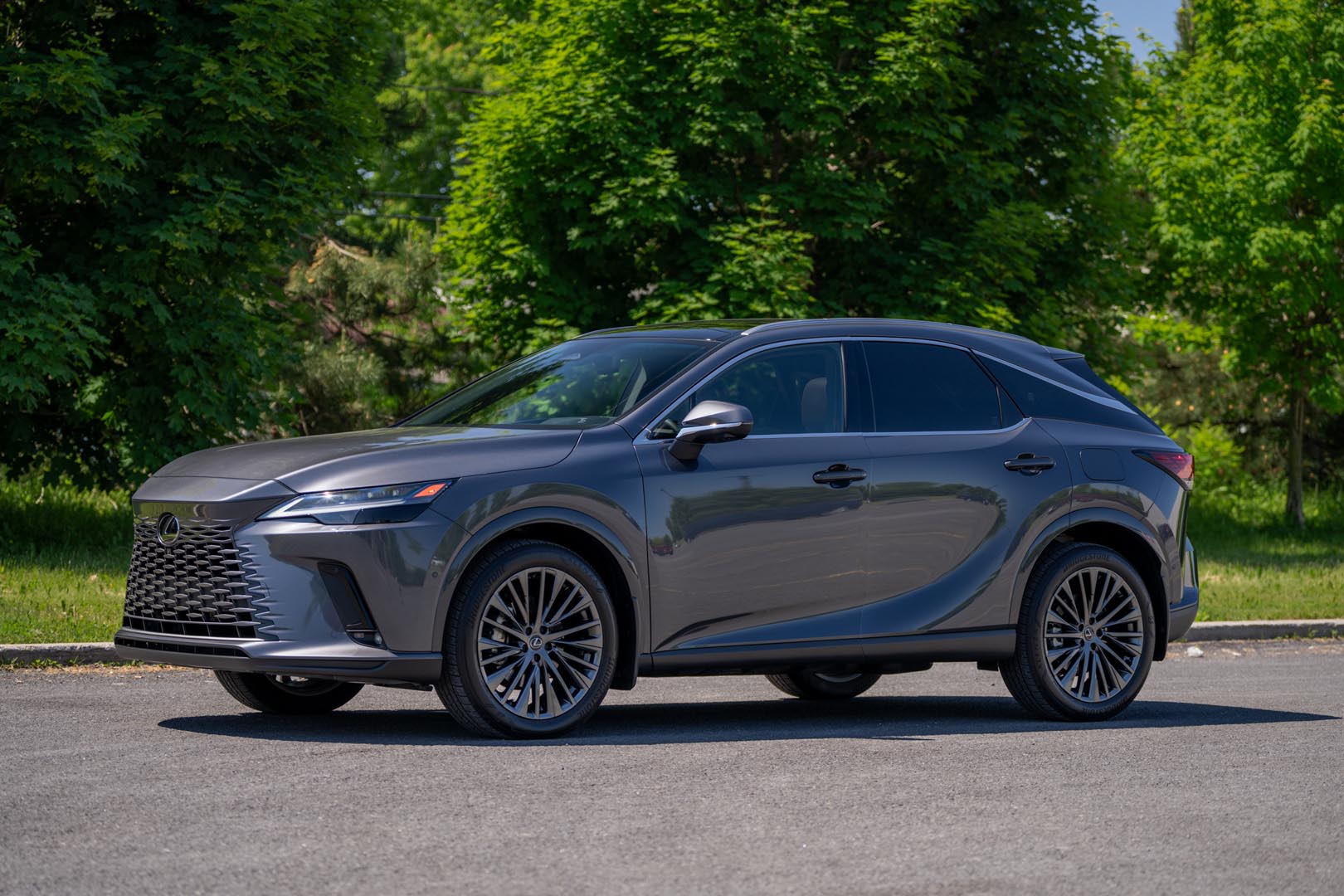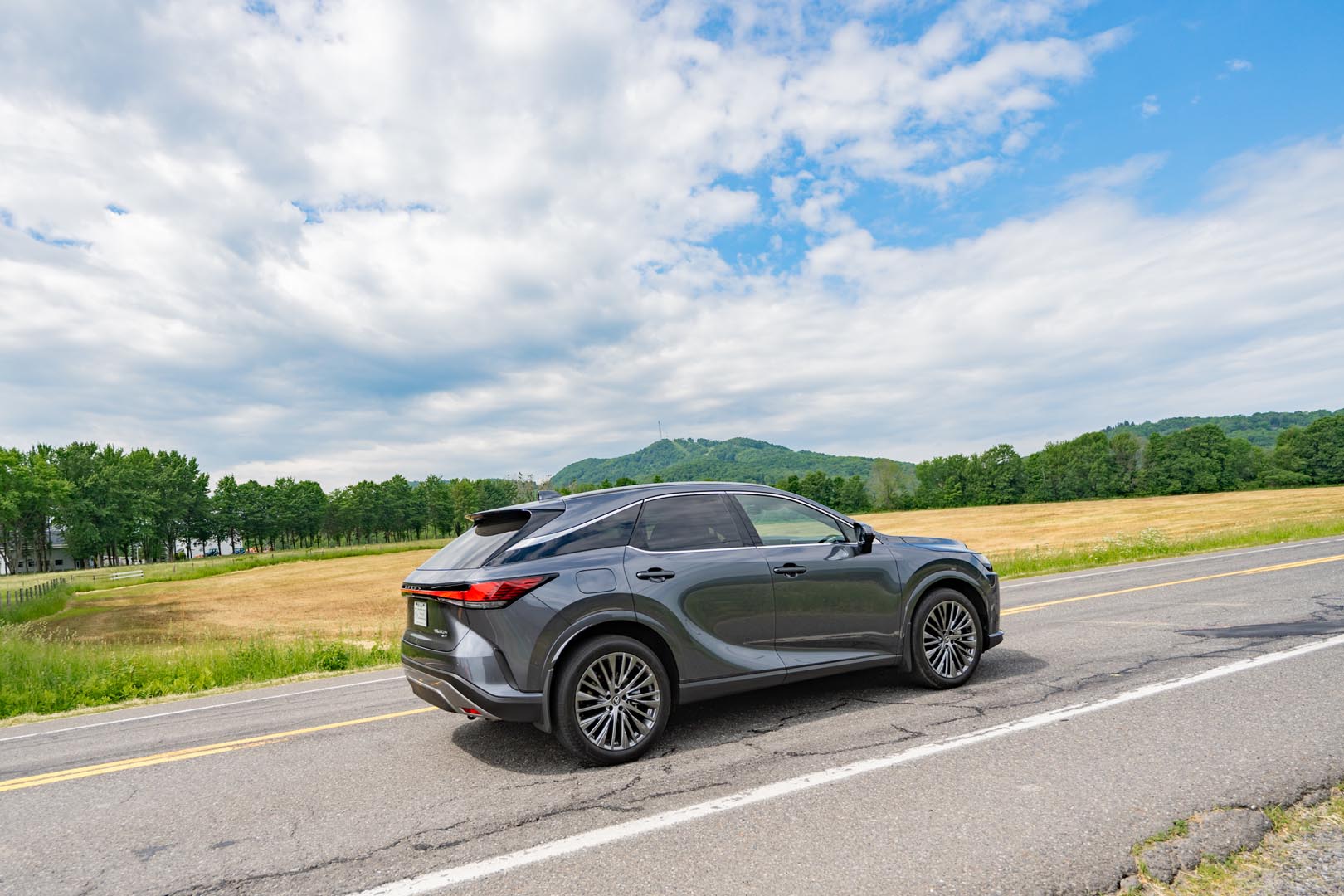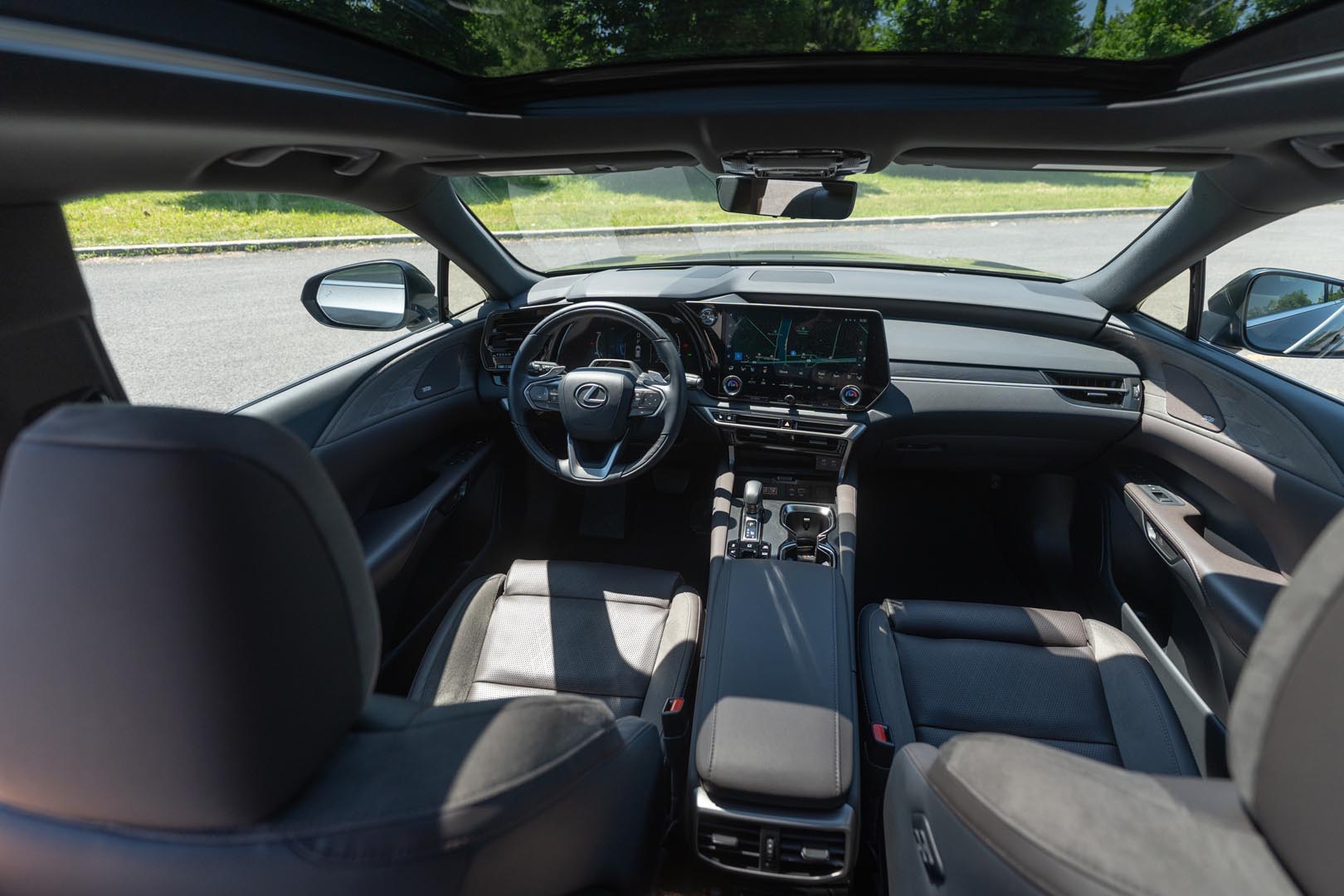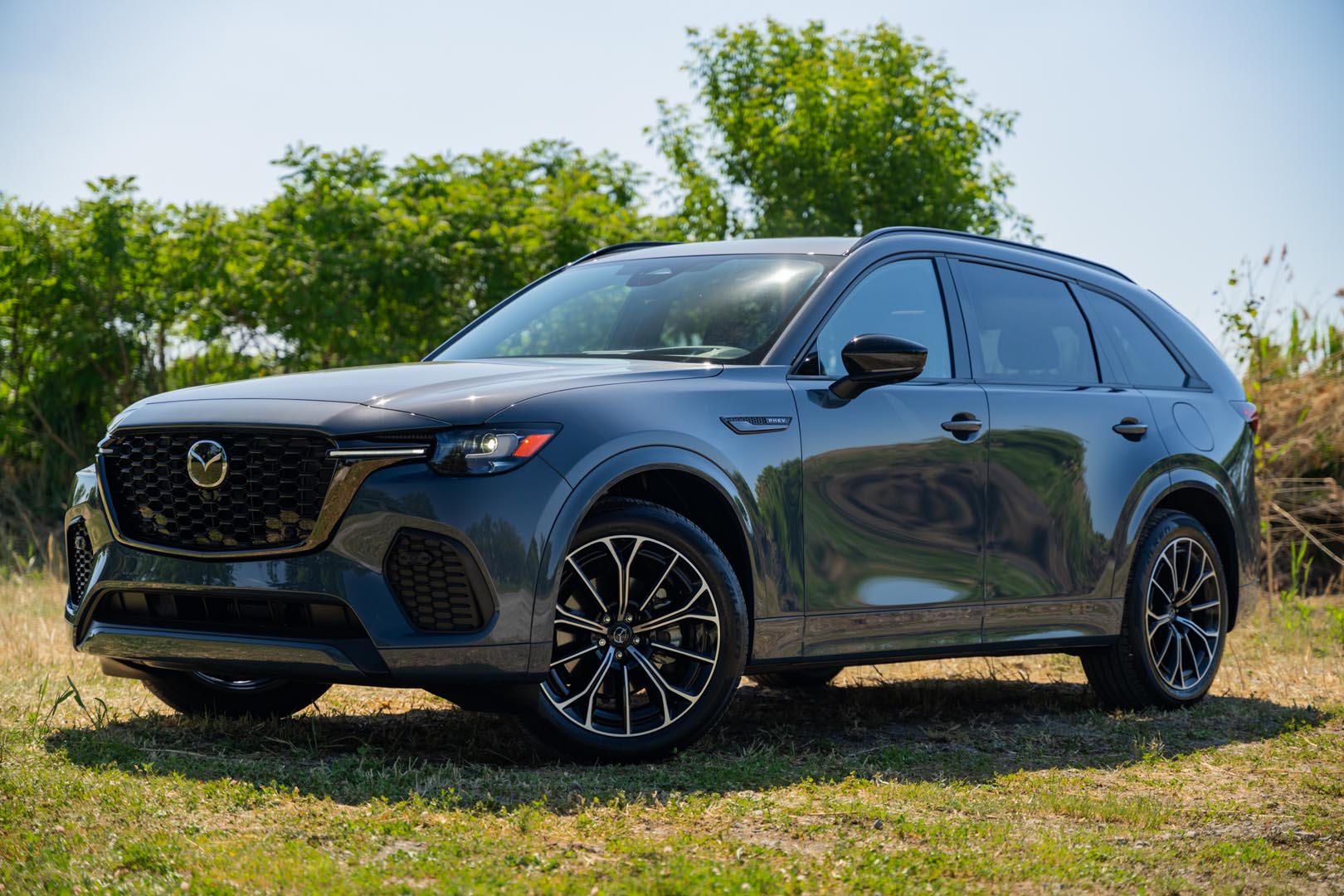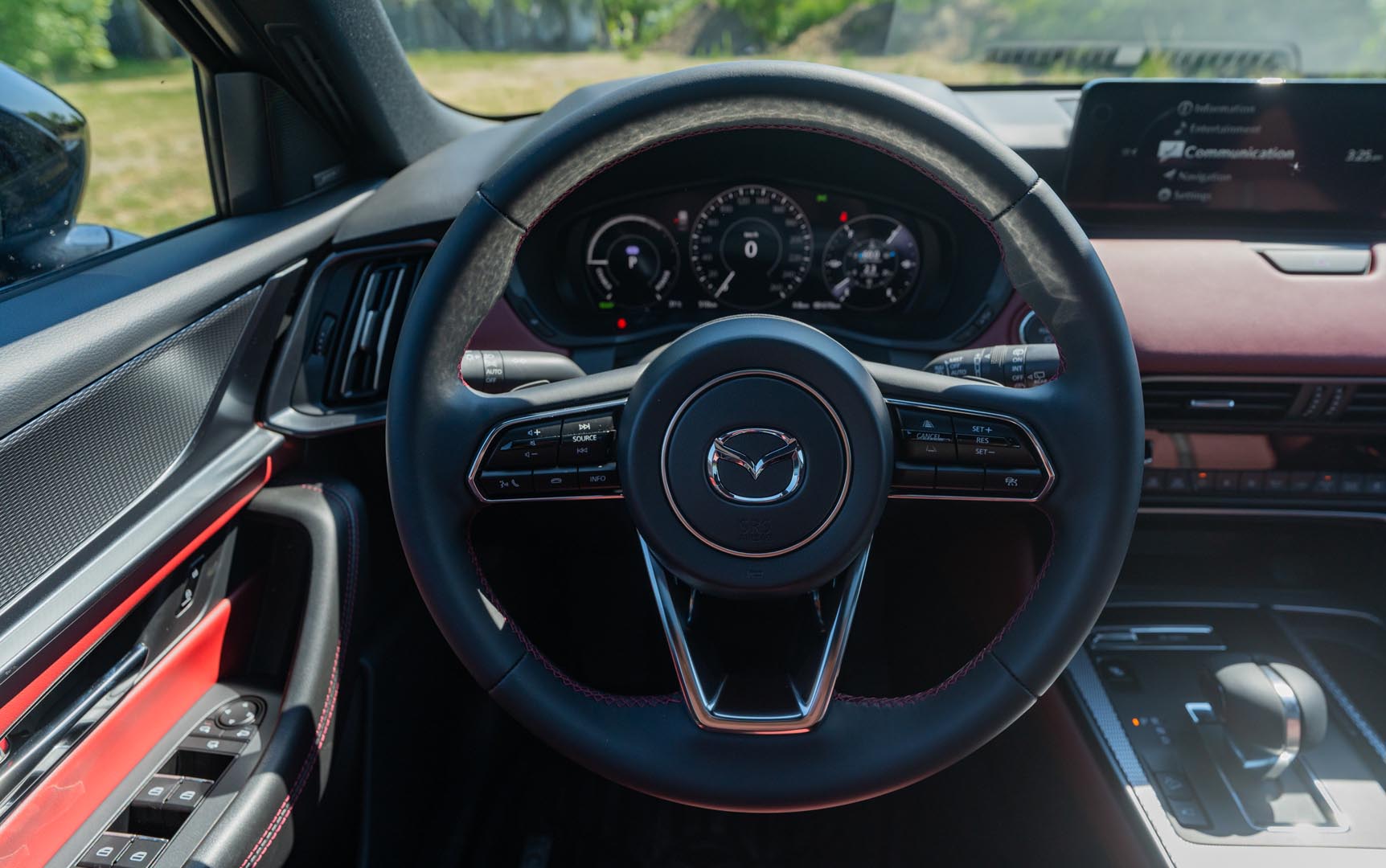
AJAC ÉcoRandonnée 2024
To save at the wheel, the solution literally is at our feet
Pros and cons
Overview
Photos: Eamonn O'Connell
Driving 6.5km in an all-electric vehicle on a mere 1% charge? Consuming just 4.3L/100km in a luxury three-row SUV? Saving over 60% on fuel by driving a hybrid? We’re not just showing off. These are some of our achievements during the 12th edition of the Automobile Journalists Association of Canada’s (AJAC) EcoRun event.
Our car guru Jesse Caron has been an AJAC member for 14 years and was one of 15 Canadian journalists who took part in this year’s event. From a “base camp” set up in Belœil, Montérégie, participants took on several challenges and drove hundreds of kilometres in a wide range of energy-efficient vehicles over a two-day period.
Jesse drove 10 of those 100% electric, plug-in hybrid, and classic hybrid models on routes consisting mainly of secondary roads, but dotted with highway and urban sections.
Scroll to the Evaluation section for all the details on the activities and the models tested, from the Lucid Air Pure to the Toyota Tacoma Hybrid Trailhunter and the Mazda CX-70 PHEV.
He also participated in several activities that demonstrated both the capabilities of today’s “green” vehicles and the benefits of realistic energy-efficient driving.
The journalists’ results were compiled after all those events and following each of the eight road trip stages. AJAC then awarded the coveted green jersey to the person who had adopted the most environmentally friendly driving style.
Check out the Verdict below for our expert’s conclusions—and how he placed!
Verdict
Photos: Eamonn O'Connell
We finished the friendly competition for the green jersey—drum roll, please—in fourth place! Of course, we could have driven 20km/h under the speed limit or turned off the air conditioning to increase our chances of getting on the podium. But that wouldn’t have accurately reflected reality at all, and it would have created frustrating—and potentially dangerous—situations for other drivers.
We preferred to accelerate with finesse, anticipate traffic lights and hills, and modulate the intensity of regenerative braking to maintain maximum momentum. No ill-timed passing either. This realistic and careful driving style allowed us to reach each point in the course without making other journalists wait, or sweating buckets in the 35°C heat beating down on us throughout the event.
Most importantly, we easily beat Natural Resources Canada’s (NRCan) fuel consumption ratings in each of the vehicles we tested, which is far from always being the case during our usual tests. Once again, AJAC’s EcoRun proves that going a bit easier on the gas pedal can yield fantastic savings in a whole host of increasingly efficient vehicles.
Evaluation
Photos: Eamonn O'Connell
The 1% challenge
How far can you drive in an electric vehicle (EV) on a 1% battery charge? The answer depends as much on the vehicle as on the driver.
To negate the influence of the first factor, the EcoRun organizers designated a vehicle specifically for the event: the newly redesigned Hyundai Kona Electric. Natural Resources Canada (NRCan) claims a range of 420km for that model. Theoretically, a 1% charge should allow a person to drive 4.2km.
Along with a teammate, we drove the small crossover on an urban loop with a speed limit from 30km/h to 50km/h, then reset the trip odometer as soon as the battery charge dropped by 1%. However, it took more than 20 minutes for the indicator to drop another percentage point! And even then, all we had to do was ease off on the gas pedal, and the charge would go back up, thanks to the regenerative braking system. When the charge finally stabilized, we’d gone exactly 6.5km.
That’s almost 50% more than the 4.2km mentioned above! The takeaway: City driving is the best way to get the most out of an EV, whereas it’s the sworn enemy of a strictly gas-powered car.
Gas versus hybrid
Even when it’s not a plug-in, a hybrid car saves a considerable amount of fuel compared with an equivalent gasoline-powered model. Based on our experience, hybrids consume 20% to 30% less black gold, or even 35% less if you drive exclusively in urban areas.
To find out for themselves, our expert and a teammate followed each other on a 13km route through the streets of Belœil as part of EcoRun. Our colleague led the way in the redesigned 2025 Toyota Camry, now powered solely by a four-cylinder engine assisted by an electric motor. We followed her in a 2024 Camry TRD, the last of its kind featuring a V6 engine.
The exercise was mandatory for all EcoRun participants, and by the end, our fuel consumption was 10.1L/100km in the Camry TRD, compared with just 3.8L/100km in the hybrid! While the gap would have been narrower if Toyota had provided a four-cylinder gas-powered Camry instead of a six-cylinder, it shows that classic hybrids still deserve their place in the lineup of energy-efficient vehicles—especially when you go lightly on the gas pedal.
Drive lots, consume very little
Besides running short challenges that were both fun and rewarding, EcoRun began with a road trip focused on responsible driving. For the 2024 edition, journalists each had to drive 550km in eight stages spread over two days. Each segment provided the opportunity to try a different vehicle.
The benefits of going easy on the gas pedal were apparent from the first leg, which was mostly on the highway. At the wheel of the Hyundai Kona Electric, we recorded a fuel consumption of 14.7kWh/100km, the equivalent of 1.7L/100km. That’s 15% less than the result obtained two weeks earlier, during our comprehensive test of the same model. Importantly, this figure is well below the 20.3kWh/100km certified by NRCan for highway driving.
Significantly more powerful than the Kona, the Genesis GV60 Performance still managed 17.5kWh/100km during a stage in the hinterland of Centre-du-Québec. Like the Genesis Electrified G80 sedan, tested later in the day, this crossover combines a sumptuous interior with an uncommonly quiet ride and an unexpected sportiness. These are two models to seriously consider if you’re eyeing a luxury EV.
Our experience in the Lucid Air was even more impressive. The small automaker had entered its Pure variant in EcoRun, the only one in the lineup to have a single engine powering the rear wheels. Despite having “only” 430hp—the all-wheel drive versions range from 620hp to 1,234hp—there was no lack of power. Although we couldn’t resist indulging in a few exhilarating—but unnecessary—bursts of acceleration, our time behind the wheel of this heavy sedan required just 13.3kWh/100km! The low, streamlined profile certainly contributes to the exceptional efficiency, but it greatly impedes cabin access, as well as visibility.
The four classic hybrid models we tested also excelled. How does a fuel economy as low as 9.6L/100km sound in a 2,345kg pickup truck with 326hp? That’s what the trip computer in the Toyota Tacoma Hybrid showed at the end of our test, despite the combination of large off-road tires and the Trailhunter trim. At best, NRCan reports 9.9L/100km on the highway.
Newly redesigned, the Hyundai Santa Fe Hybrid also surprised us. The 5.7L/100km it required eclipsed not only NRCan’s prediction, but also the approximately 8L/100km we measured in a subsequent test under our usual conditions.
The 2025 Toyota Camry performed just as well, thanks to sipping fuel at only 4.6L/100km. All versions of this excellent mid-size sedan are now hybrid.
It uses the same drivetrain as a slew of Toyota’s mid-size models, including the new Toyota Crown Signia. Similar in form to a Subaru Outback, this tall station wagon will soon take over from the second-generation Toyota Venza, which has met with mixed success. The 20 minutes we spent in the Crown Signia suggest it’s a very roomy, comfortable, practical and not very thirsty vehicle. However, the $57,000 price tag will make some families think twice.
The best surprise came from another vehicle from the same parent company, the Lexus RX 450h+. This plug-in model was given to us with the battery discharged to a minimum, a rule established for all plug-in hybrids to level the playing field. The drive through the rolling hills of the Eastern Townships consumed just 4.3L/100km. If you drive such a vehicle without making any particular effort to save fuel, you can expect no better than 7L to 8L/100km.
The 7.3L/100km observed in the new Mazda CX-70 PHEV—a plug-in CX-90 without a third row of seats—may look less impressive, but it’s still significantly below NRCan’s official rating for highway driving. This vehicle compensates for having lower fuel efficiency than Lexus/Toyota products by delivering a more exciting drive, even at the low speeds required by EcoRun.
